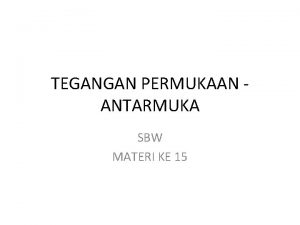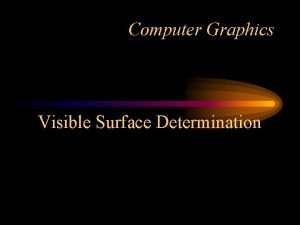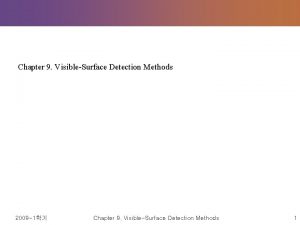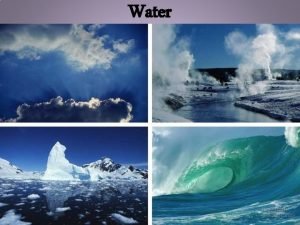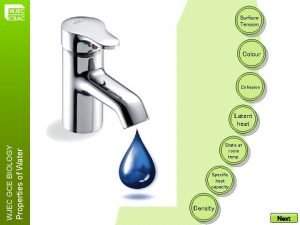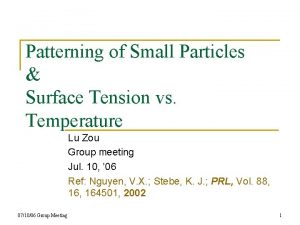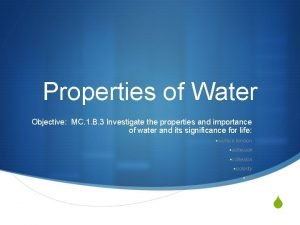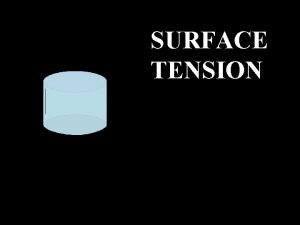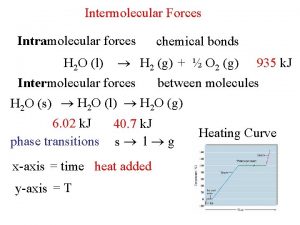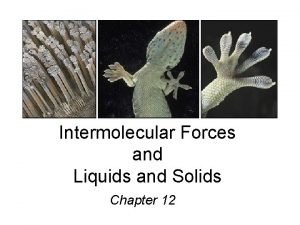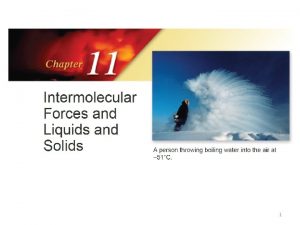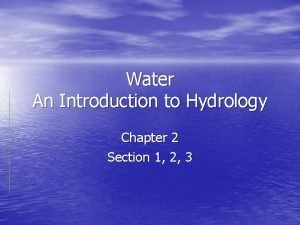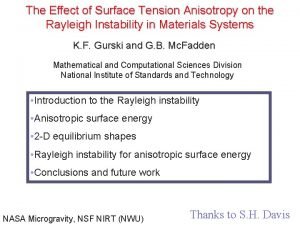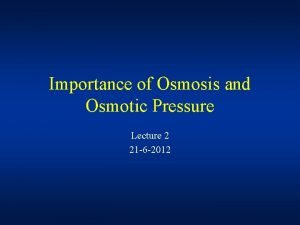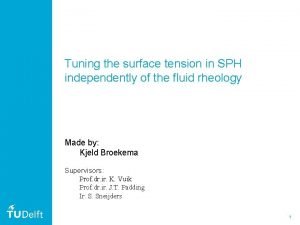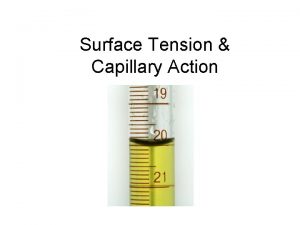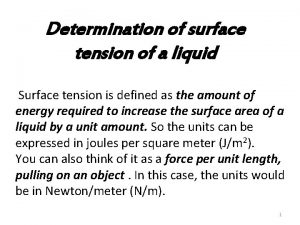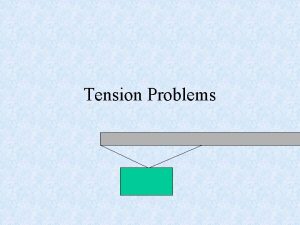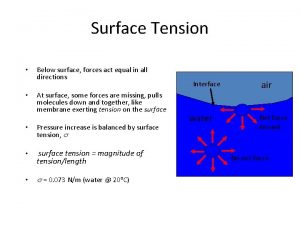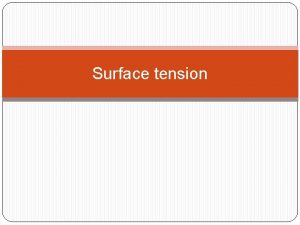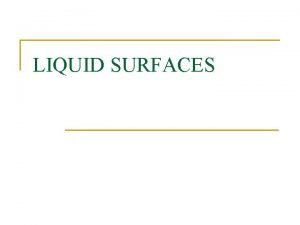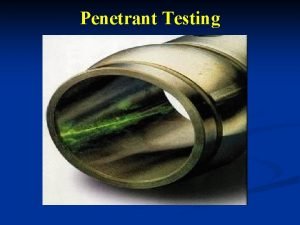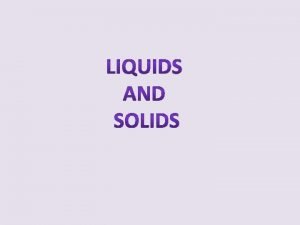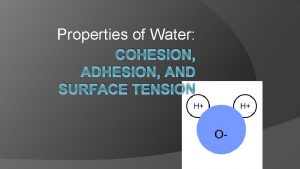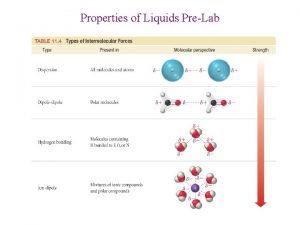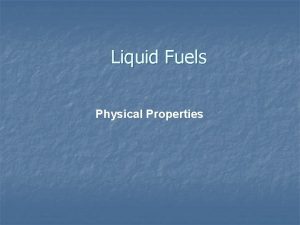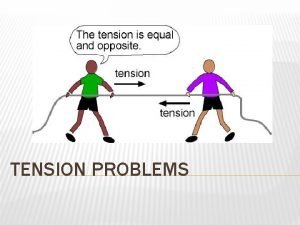Lecture 1 Properties of liquid Surface tension Determination






















![Structure of Quinone [P]= 236. 1 [P]= 219. 0 Observed value = 236. 8 Structure of Quinone [P]= 236. 1 [P]= 219. 0 Observed value = 236. 8](https://slidetodoc.com/presentation_image_h2/95f2c73434ded2d6f814c3411dea7e4d/image-23.jpg)


- Slides: 25

Lecture 1 • • Properties of liquid Surface tension Determination of surface tension Parachor and structure elucidation

Properties of liquids • Liquids state is intermediate between solid and liquid. • Liquids do not have definite shape. • Molecules of liquids have intermediate order of cohesive forces. • Liquids resembles solids in terms of compressibility and density. • In liquids there is little space between molecules.

Figure 1: Relative spacing between molecules in solids , lquids and gases.

• The compactness and cohesion observed in liquids are like solids and random motion of molecules is like that occur in gases. Q: write down the properties of liquids?

Surface tension • Surface tension is another property of the liquid related to intermolecular forces.

What do you see?

• Surface tension is defined as “force in newton acting at right angles along the surface of a liquid one meter in length”. • It is represented by “ɣ” (gamma). • Units Dynes cm-1 or ergs cm -2 Nm-1 or Jm -2 Do you know? 1 dyne cm-1 = 10 -3 Nm -1

Capillary Action • Which liquid wets the surface of the solid, depends upon the interaction between the liquid molecules and solid surface. • Contact angle (θ) “the contact angle is angle between the tangent to the liquid surface at the point of contact and the solid surface inside the liquid”

• Its values ranges between 0ᵒ to 180ᵒ. • If value is less than 90ᵒ, the liquid wets the surface of the solid. • If value is greater than 90ᵒ, the liquid does not wet the surface.

Measurement of Surface Tension • Capillary Rise method: The rise or fall of liquid in the capillary tube depends upon the surface tension.

• r =radius of capillary tube • h = height of liquid column • ɣ = Surface tension Fu = Fd The force due to surface tension is acting at the angle θ. The upward force is equal to the vertical component of the surface tension, i. e. ɣ Cosθ times circumference

Fu = 2πr. ɣ Cos θ ----- (1) The downward force is given by: Fd = weight of the liquid column Fd = mg = Vdg----- (2) Volume of the liquid in the column is V= πr 2 h At height “h” Fu= Fd So, 2πr. ɣ Cos θ = πr 2 hdg Now simplify: ɣ = rhdg/2 Cosθ If , θ = 0ᵒ Then, ɣ = rhdg/2

Numerical • The radius of a capillary tube is 1. 05 x 10 -4 m. Density of liquid is 0. 80 g/cm 3 rises to a height of 6. 25 x 10 -2 m. calculate surface tension. (θ=0ᵒ).

The Drop Weight Method • In this method the liquid whose surface tension is to be measured is allowed to pass through a capillary tube held vertically. • The liquid that comes out of the capillary tube assumes a spherical shape and has some definite weight. • When the wt of drop becomes equal to surface tension, acting along the circumference of the tube, it falls down.

• There fore, ɣ 2πr = W = mg = Vdg----1 This method is generally used for comparison. The instrument used to determine surface tension is called “stalagmometer”.

Stalagmometer is a bulbed capillary tube, it is filled upto mark A with the liquid is then allowed to fall slowly, in the form of dropswhich are collected in the weighing bottle, the rate at which drops fall is adjusted in such a way, that every drop falls after 3 sec. If W 1 and W 2 are the weights of 10 drops of two liquids , and ɣ 1 and ɣ 2 are their surface tension then, ɣ 1 / ɣ 2 = W 1 / W 2 -------(1)

• It is more convenient to determine the number of drops of fixed volume of liquid than to determine weight. If n 1 and n 2 are the number of drops of two liquids and d 1 and d 2 are their densities. Then average weight of liquid drops is W 1 = m 1 g/n 1= Vd 1 g/n 1 W 2= Vd 2 g/n 2 putting the values of W 1 and W 2 in the following equation: ɣ 1 / ɣ 2 = W 1 / W 2 -------(1) We get ɣ 1 / ɣ 2 = d 1 n 2 /n 1 d 2

Numerical • At 293 K, 10 -2 dm 3 of water formed 29 drops, and the same volume of other liquid formed 86 drops in the same stalagmometer. Density of organic liquid is 0. 7 g/cm 3 and water is 1 g/cm 3. The surface tension of water is 7. 2 x 10 -2 Nm-1. determine the surface tension of organic liquid?

Surface Tension and Chemical Constitution-Parachor • The empirical relationship between surface tension and density for normal liquids is given by D. B Macleod in 1923: Ɣ 1/4 / D-d = C Where, D = Density of liquid d = Density of vapours C= Constant, is independent of temperature for non -associated liquids and increases for associated liquid, with rise in temperature.

• Sudgen (1924) multiplied the Macleod equation with molecular mass and obtained a new constant called Parachor. MƔ 1/4 / D-d = MC = [P] At temperature below critical temperature D>>d, So MƔ 1/4 / D = [P] M/D is molar volume (Vm)of liquid, if surface tension = 1, then [P]= Vm So, Parachor is defined as the molar volume of the liquid at a temperature where its surface tension is unity. Parachor is both additive and constitutive property, it value is expressed as two sets of constants.

Numerical • The surface tension of benzene is 29. 2 dynes / cm, its density is 0. 88 g/cm 3. Calculate its parachor value?

Application of Parachor value to elucidate the structure • Structure of benzene To calculate the parachor value of benzene 6 C = 4 X 4. 8= 28. 8 6 H= 6 X 17. 1= 102. 6 3 Double bonds = 3 x 23. 3 = 69. 6 1 ring =1 x 6. 1 = 6. 1 Total : 207. 1 Observed parachor value = 206. 4 So, ………. .
![Structure of Quinone P 236 1 P 219 0 Observed value 236 8 Structure of Quinone [P]= 236. 1 [P]= 219. 0 Observed value = 236. 8](https://slidetodoc.com/presentation_image_h2/95f2c73434ded2d6f814c3411dea7e4d/image-23.jpg)
Structure of Quinone [P]= 236. 1 [P]= 219. 0 Observed value = 236. 8

• Position of substituent doesnot change the parachor value. • The observed value of o-chlorotoluene is 280. 8 and for p-chlorotoluene is 283. 6 and theoretical value for both isomers is same that is 283. 3.

Applications of Surface tension • • • Cleansing action of soap Tooth paste Nasal jellies Mouth washes Look for more………. .
 Spin coat
Spin coat Tegangan permukaan dan tegangan antar muka
Tegangan permukaan dan tegangan antar muka What is the solid object relationship model
What is the solid object relationship model Visible surface determination
Visible surface determination Visible surface determination
Visible surface determination 01:640:244 lecture notes - lecture 15: plat, idah, farad
01:640:244 lecture notes - lecture 15: plat, idah, farad Bill nye properties of water
Bill nye properties of water Surface tension
Surface tension Surface tension in physical pharmaceutics
Surface tension in physical pharmaceutics Surface tension vs temperature
Surface tension vs temperature Strong surface tension
Strong surface tension Dimensional formula of surface tension
Dimensional formula of surface tension Colloids shampoo uses
Colloids shampoo uses Surface tension meaning
Surface tension meaning How does water purity affect surface tension hypothesis
How does water purity affect surface tension hypothesis Surface tension intermolecular forces
Surface tension intermolecular forces Surface tension intermolecular forces
Surface tension intermolecular forces Capillary action
Capillary action Surface tension
Surface tension Surface tension in fluid mechanics
Surface tension in fluid mechanics Nima khadem
Nima khadem Hydrostatic pressure and osmotic pressure
Hydrostatic pressure and osmotic pressure Sph surface tension
Sph surface tension Commercial liquid dielectrics
Commercial liquid dielectrics Lever arm rule liquid-liquid extraction
Lever arm rule liquid-liquid extraction Free surface effect
Free surface effect

